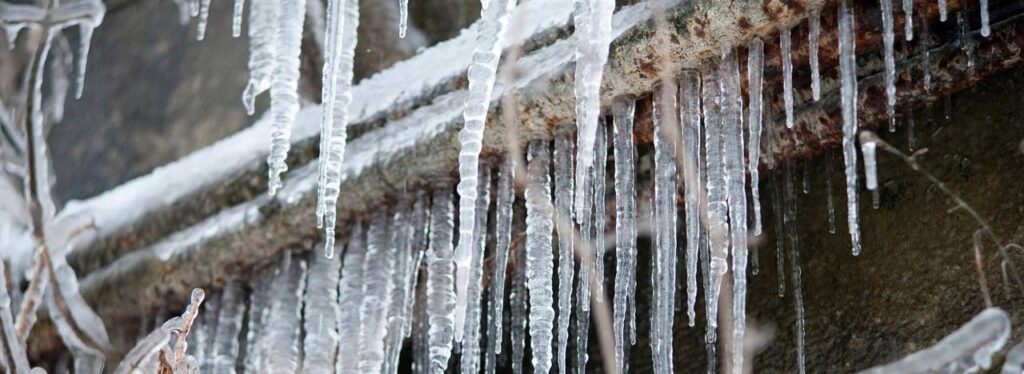Have you been trying to find resources concerning Prevent Frozen Pipes ?

Cold weather can ruin your pipes, particularly by freezing pipelines. Below's exactly how to stop it from happening and what to do if it does.
Intro
As temperatures drop, the threat of icy pipelines rises, potentially bring about pricey fixings and water damage. Understanding how to prevent icy pipelines is critical for home owners in chilly climates.
Avoidance Tips
Protecting at risk pipes
Wrap pipelines in insulation sleeves or use heat tape to protect them from freezing temperature levels. Focus on pipes in unheated or external areas of the home.
Home heating strategies
Keep indoor areas appropriately heated up, especially locations with plumbing. Open up cabinet doors to enable warm air to flow around pipelines under sinks.
Exactly how to recognize icy pipes
Seek lowered water flow from faucets, unusual odors or noises from pipes, and visible frost on exposed pipes.
Long-Term Solutions
Architectural changes
Take into consideration rerouting pipes away from outside wall surfaces or unheated locations. Include extra insulation to attic rooms, cellars, and crawl spaces.
Updating insulation
Purchase top notch insulation for pipelines, attics, and walls. Correct insulation assists preserve constant temperatures and lowers the danger of icy pipelines.
Shielding Outside Pipes
Garden hoses and outside faucets
Detach and drain pipes yard tubes before winter. Set up frost-proof spigots or cover outdoor taps with shielded caps.
Recognizing Icy Pipes
What triggers pipes to freeze?
Pipelines freeze when revealed to temperature levels below 32 ° F (0 ° C) for prolonged durations. As water inside the pipelines freezes, it increases, putting pressure on the pipeline wall surfaces and possibly creating them to burst.
Risks and damages
Icy pipes can result in water disruptions, residential property damages, and expensive repairs. Ruptured pipes can flooding homes and create substantial structural damage.
Indications of Frozen Piping
Determining frozen pipelines early can stop them from breaking.
What to Do If Your Pipes Freeze
Immediate actions to take
If you presume icy pipelines, maintain faucets open to ease pressure as the ice melts. Use a hairdryer or towels taken in hot water to thaw pipelines gradually.
Final thought
Stopping frozen pipelines needs proactive procedures and quick feedbacks. By comprehending the reasons, indications, and safety nets, house owners can safeguard their pipes throughout winter.
6 Proven Ways to Prevent Frozen Pipes and Protect Your Home
Disconnect and Drain Garden Hoses
Before winter arrives, start by disconnecting your garden hoses and draining any remaining water. Close the shut-off valves that supply outdoor hose bibs and leave the outdoor faucet open to allow any residual water to drain. For extra protection, consider using faucet covers throughout the colder months. It’s also important to drain water from any sprinkler supply lines following the manufacturer’s directions.
Insulate Exposed Pipes
Insulating your pipes is an effective way to prevent freezing. Pipe insulation is readily available at home improvement stores and is relatively inexpensive. Pay close attention to pipes in unheated areas such as the attic, basement, crawl spaces, or garage. Apply foam insulation generously to create a buffer against the cold. You can also wrap your pipes in heat tape or thermostat-controlled heat cables for added warmth.
Seal Air Leaks
Inspect your home for any cracks or openings that could let in cold air. Seal any holes around the piping in interior or exterior walls, as well as the sill plates where your home rests on its foundation. Additionally, make sure to keep your garage door closed unless you’re entering or exiting. Leaving it open creates a significant air leak that can lead to frozen pipes.
Allow Warm Air Circulation
During cold snaps, it’s essential to allow warm air to circulate evenly throughout your home. Leave interior doors ajar to promote better airflow. Open kitchen and bathroom cabinets to help distribute heat consistently around the rooms. If you have small children or pets, be sure to remove any household chemicals or potentially harmful cleaners from open cabinets for safety.
Let Faucets Drip
A small trickle of water can make a big difference in preventing ice formation inside your pipes. When temperatures drop significantly, start a drip of water from all faucets served by exposed pipes. This continuous flow helps prevent the water from freezing. Additionally, running a few faucets slightly can relieve pressure inside the pipes, reducing the chances of a rupture if the water inside does freeze.
https://choateshvac.com/6-proven-ways-to-prevent-frozen-pipes-and-protect-your-home/

Do you like reading up on Helpful Tips to Prevent Frozen Pipes this Winter? Try leaving a review down below. We will be happy to hear your thoughts about this write-up. We are looking forward that you visit us again later on. In case you liked our blog posting if you please make sure you remember to pass it around. We cherish your readership.
Call Today
Comments on “Avoiding Frozen Plumbing in Winter: Expert Tips”